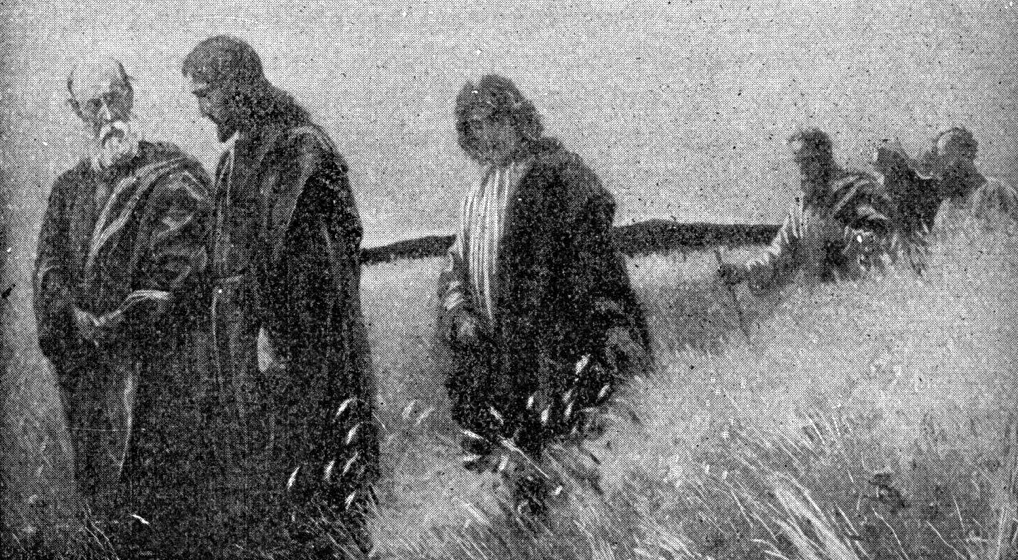I love the phrase in the dust of the Rabbi. It is so foreign to our 21st century ears, but so important to understand today. The implications for our Christian lives are tremendous.
In the dust of the Rabbi. There it is again. It’s where you want to be. And when you see where that is, if you haven’t already, you will want to get there as soon as possible. You will want to live there. In fact, I am going to encourage you to do just that. And what may sound even more extreme—once you are there you will wonder how you ever viewed your Christianity any other way. It is that powerful.
But let’s go back to 1st century Israel.
Once there was a man who came to do something very special in the grand plan of God. This man came to save his people from their sins. But not only this, he undertook a public teaching, preaching and healing ministry to show them how to live a righteous and godly way of life in proper relationship with God; this all led up to the point of his saving act—his death.
This man had many important things to say, do and teach. So important, in fact, that he called disciples to come after him not only so they could witness it all, but so he could impart to them his way of living his religion. And some of them he specifically charged with the leadership of taking his message to the whole world (Matt. 28:18-20). He called disciples after him just like the religious rabbis and sages of his day.
A rabbi or sage of Jesus’ day would take disciples after him whose job was to follow the rabbi everywhere he went. But this was not just to follow him, it was to be with him. It was to learn everything he had to teach. It was to watch and learn his lifestyle, how he practiced his religion. It was to ask him questions. It was to get answers. It was a first-hand, on-the-job learning and training experience.
Disciples of rabbis memorized the rabbi’s words. That was part of their job. They literally wanted to become as much like their rabbi as humanly possible, gaining all his knowledge and wisdom, adopting for themselves how he practiced his religion. They wanted to eat like him. They wanted to recite Scripture like him. They wanted to pray like him. They wanted to teach like him, serve others like him, help like him, and on. And they left everything and gave their lives to do it, full-time.
A potential disciple would have to count the cost of discipleship to a famous rabbi before embarking with him (this is what is happening in Luke 9:57-62). It wasn’t a cakewalk. Following a wandering teacher would not always be easy, and oftentimes the sleeping arrangements for the night were uncertain. The next meal could also be uncertain. If married, a potential disciple would need to get his wife’s permission to leave her for a set time while he was off following the rabbi. Others would need to sell some or all of their possessions in order to be free from them so they could follow the rabbi. It was a 100% life commitment for a set period of time. It was serious business. It was a complete honor.
The phrase in the dust of the rabbi refers to the disciple following closely behind his rabbi, so much so that the disciple would literally be walking in the dust kicked up from the rabbi’s feet. It symbolizes the teacher-disciple relationship which often would become closer than the disciple’s relationship with his own father. It symbolizes the adherence of the disciple to the teacher. It symbolizes the disciple’s deep yearning, desire, passion, and willingness to learn everything the rabbi has to teach. It symbolizes where God wants us to be today—and this is the heart of the matter.
But wait a minute. This is not 1st century Israel. And anyway, didn’t Jesus’ call to discipleship die with him? Last time I checked, Jesus isn’t walking around my city calling disciples after him to follow him in a wandering preaching, teaching and healing ministry. He already did that. And he is now seated at the right hand of the throne in heaven (Col. 3:1; Heb. 8:1).
And that would be correct…well…mostly.
Jesus’ call to discipleship didn’t die with him, it only changed. Two terms that can help us understand this are literal discipleship and spiritual discipleship. These are the two paradigms of discipleship. The first paradigm is the first century, pre-death and resurrection literal discipleship walk after the Rabbi Jesus, which is described above. The literal discipleship walk is what Jesus called his disciples to while he literally walked the earth, and hence can no longer be done today. The second paradigm is the post-death and resurrection spiritual discipleship walk after the Rabbi Jesus. The spiritual discipleship walk is what he calls all disciples to today.
So what does this spiritual discipleship walk look like?
It looks like everything he called his disciples to in the literal walk, except the Rabbi is not on the earth, but in heaven. He still calls us to follow him and his teachings. He still calls us to give up everything that gets in the way of our discipleship walk with him. He still calls us to count the cost of discipleship to him before embarking with him. He still calls us to watch his life and learn everything he has to teach; this is where Scripture comes in.
He still calls us to be with him, to learn how he practiced his religion, to memorize his words, to become as much like him as humanly possible, to gain all his knowledge and adopt his religious practices, to recite Scripture like him, to pray like him, to teach like him, serve others like him, help like him, to put him before any other thing or relationship we have, to make and keep a 100% life commitment of discipleship to him for the rest of our lives.
Jesus still expects us to become and live as his disciples, regardless of what side of his death we are on.
We can still walk in the dust of the Rabbi; in fact, that is right where he wants us. And when you are there, the dust that covers you will be the relationship with him that is closer than a father; the 100% commitment of the disciple to the teacher; the deep yearning, desire, passion, and willingness to learn everything he has to teach and to strive to put it into practice. That is what the dust looks like. We have everything we need to be successful. Come and see. The only hindrance is a lack of willingness.
The only thing left to do is to strap on your sandals and come follow in the dust of the Rabbi.



